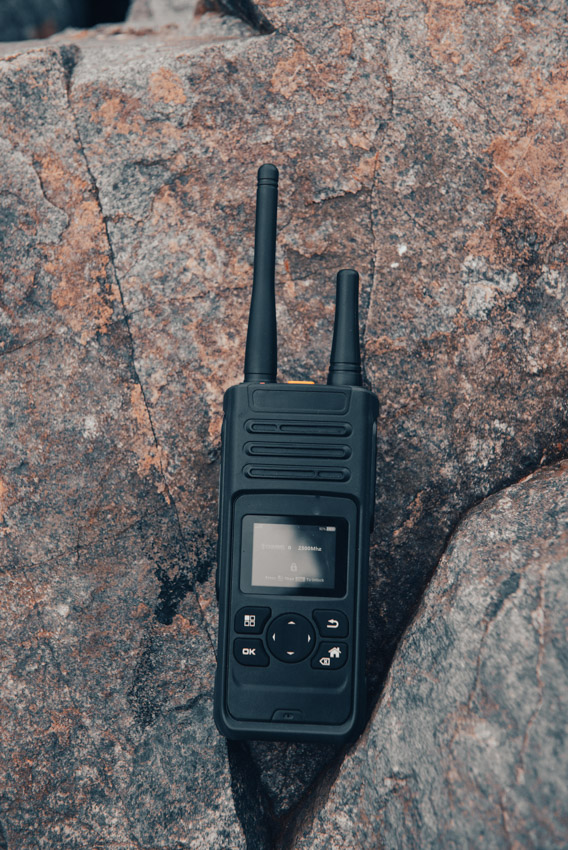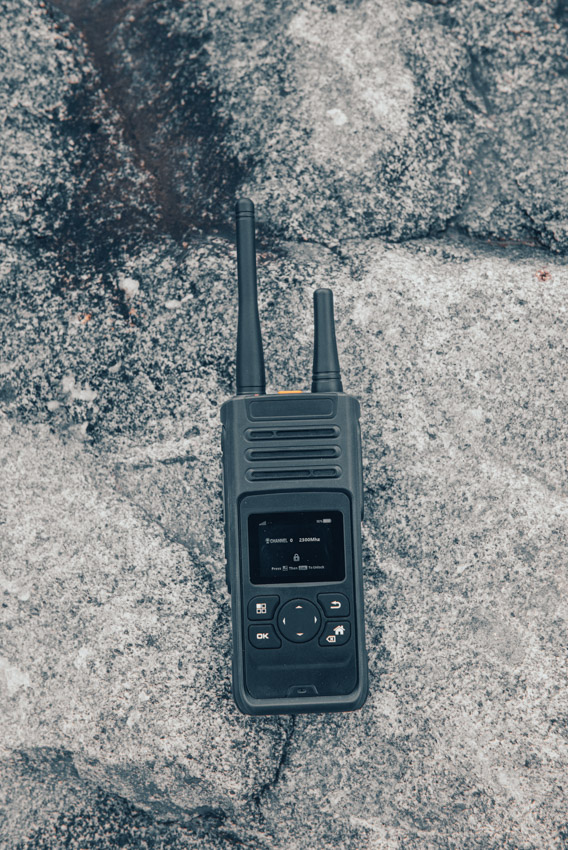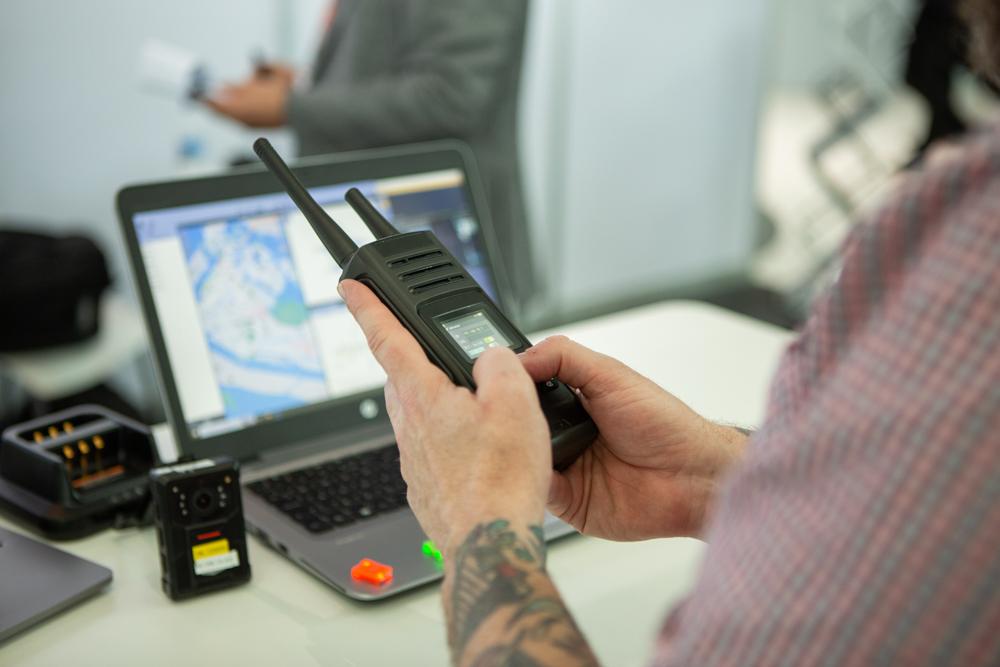
SOV Mesh
Mesh Technology, ip mesh radios, or mesh network (or simply meshnet) is a local network topology in which the infrastructure nodes (i.e. bridges, switches, and other infrastructure devices) connect directly, dynamically and non-hierarchically to as many other nodes as possible and cooperate with one another to efficiently route data from/to clients.
These different technologies can be integrated with mMESH to offer bespoke solutions to government agencies, responsible for defence and homeland security. The solutions can also be adapted for the private sector, for example broadcasters, oil and gas sector etc.
Mesh Radios or Nodes have a transceiver, meaning it acts as both a transmitter and receiver.
MIMO ANTENNAE
Mesh radios / nodes have at least two antennae. When in Transmit mode, only one of the antennae is in use. When in Receive mode, both antennae are used as the receiver is a dual-diversity receiver.
AMPLIFIER
The power amplifier is active when the radio is in transmit mode, but has to de-activate when the radio is in receive mode, otherwise the receiver would be swamped by the RF output from the amplifier. This “switching” requirement means that the amplifier has to be able to switch between transmit and receive mode very quickly, typically within 20 nanoseconds.
MESH RADIOS WITH DIFFERENT RF POWER OPERATING IN THE SAME MESH
An ACE6 Technology Mesh network can have up to 64 Nodes/Radios operating on a single frequency. Some radios may be vehicle mounted, or on aircraft or other mobile platforms, and some may be body-worn or hand-held radios. Some of the radios may have different power amplifiers so that they can transmit over long range. This is typical in a dismounted soldier/officer deployment where the Command Vehicle may be using a 2W amplifier to communicate with other Command vehicles, some distance away, in a deployment. The dismounted users typically only need to communicate within their group, with the Command vehicle as the “hub Node”
SO, HOW CAN RADIOS OF DIFFERENT POWER OPERATE IN A MESH?
The default power within the mesh will be determined by the lower power radios.
Take the example of six dismounted officers using 250mw Mesh radios / nodes to communicate among themselves, and to their Command vehicle, which has a 2W Node/Radio. When the 250mW radio is talking to the 2W radio, in transmit mode, it is using its 250mW amplifier to transmit across the network, and the other radios, when in receive mode, are receiving that 250mW transmission when they are within RF range of the transmission. This includes the 2W radio on the Command vehicle, in receive mode.
When the 2W radio on the Command vehicle is in transmit mode its range is obviously much greater than the 250mw radios in the same network and, when within range, all of these radios can receive the transmission from the 2w radio. Every radio in the network must be able to both transmit and receive to be an operational radio and, therefore, must be within range of at least one other radio in the network. So, in this scenario, you have an effective 250mW network.
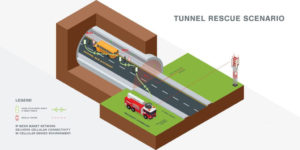
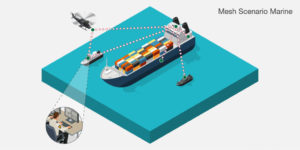
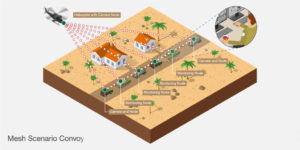
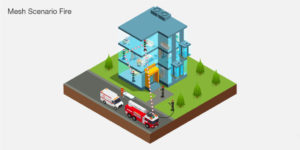
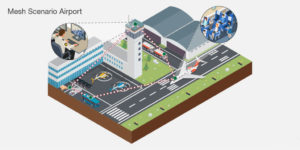

The higher power of the 2W radio only provides an advantage when it is communicating with another 2W, or higher power, radio. This would be a good design when you have multiple vehicles, or vessels, operating in a wide theatre and the Commanders in each vehicle or vessel need situational awareness of conditions in the whole theatre of operation.
The theatre of operation could be small teams of covert operatives following a target in a city-centre scenario, communicating to a covert command vehicle; or it could be a Naval boarding party deploying on a RIB to inspect a suspect vessel, while communicating with the mother ship; or it could be multiple Counter-Terrorist teams surrounding an incident and needing communications across a wide area.
USE OF HIGH POWER MESH RADIOS (10W AND HIGHER)
COFDM video modulation provides excellent Non-Line Of Sight RF performance, in terms of both range and penetration. Two 10W Mesh radios, operating in UHF frequency, are capable of 200Km+ range in a Line-of-Sight application. Where Line-Of-Sight is not available the higher power can help to “punch through” obstacles. Up to 64 radios can be networked in a single narrow band network, as standard.
MIMO (MULTIPLE INPUT, MULTIPLE OUTPUT)
At one time, in wireless the term “MIMO” referred to the use of multiple antennas at the transmitter and the receiver. In modern usage, “MIMO” specifically refers to a practical technique for sending and receiving more than one data signal simultaneously over the same radio channel by exploiting multipath propagation. Although this “multipath” phenomenon may be interesting, it’s the use of orthogonal frequency division multiplexing to encode the channels that’s responsible for the increase in data capacity. MIMO is fundamentally different from smart antenna techniques developed to enhance the performance of a single data signal, such as beamforming and diversity.
The implementation of MIMO more than doubles the current maximum network capacity from 54mbps to >120mbps. This is due to the addition of a higher modulation scheme than previously employed. Up to now, the maximum modulation scheme was 256-QAM. With the implementation of MIMO, we have added 1024-QAM, which delivers a greater network capacity at 20MHz bandwidth.
Talk to us about our mesh products
High Quality Standards
SDS have strategically aligned ourselves with cutting edge Mesh and Critical Comms manufacturers to ensure that we can offer future proof and flexible communication solutions.
Leading Experts
With subject matter experts in IP Mesh radio systems, SOCs and Cyber Forensics, Mobile Network Deployments and edge computing we continue to stay abreast of latest innovations to be ready for our diverse clients needs as their reliable engineering partner.


